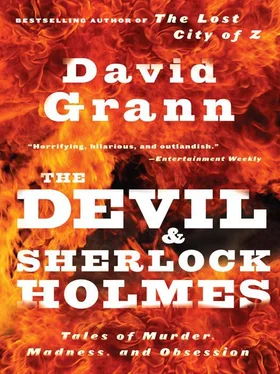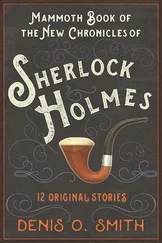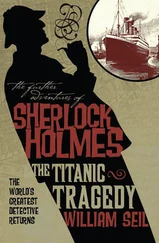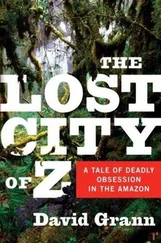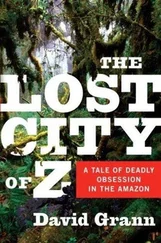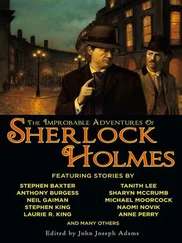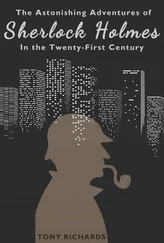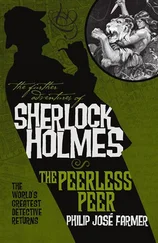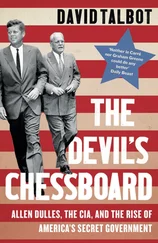After Edwards closed the book, he explained that he had spoken frequently with Green about the Christie’s sale. “Our lives have been dominated by the fact that Conan Doyle had five children, three of whom became his literary heirs,” Edwards said. “The two boys were playboys. One of them, Denis, was, I gather, utterly selfish. The other one, Adrian, was a repulsive crook. And then there was an absolutely wonderful daughter.”
Green, he said, had become so close to the daughter, Dame Jean, that he came to be known as the son she never had, even though in the past Conan Doyle’s children had typically had fractious relationships with their father’s biographers. In the early nineteen-forties, for example, Adrian and Denis had cooperated with Hesketh Pearson on “Conan Doyle: His Life and Art,” but when the book came out and portrayed Conan Doyle as “the man in the street,” a phrase Conan Doyle himself had used, Adrian rushed into print his own biography, “The True Conan Doyle,” and Denis allegedly challenged Pearson to a duel. Dame Jean had subsequently taken it upon herself to guard her father’s legacy against scholars who might present him in too stark a light. Yet she confided in Green, who had tried to balance his veneration of his subject with a commitment to the truth.
Edwards said that Dame Jean not only gave Green a glimpse of the treasured archive; she also asked for his help in transferring various papers to her solicitor’s office. “Richard told me that he had physically moved them,” Edwards said. “So his knowledge was really quite dangerous.”
He claimed that Green was “the biggest figure standing in the way” of the Christie’s auction, since he had seen some of the papers and could testify that Dame Jean had intended to donate them to the British Library. Soon after the sale was announced, Edwards said, he and Green had learned that Charles Foley, Sir Arthur’s great-nephew, and two of Foley’s cousins were behind the sale. But neither he nor Green could understand how these distant heirs had legally obtained control of the archive. “All we were clear about was that there was a scam and that, clearly, someone was robbing stuff that should go to the British Library,” Edwards said. He added, “This was not a hypothesis—it was quite certain in our own minds.”
Edwards also had little doubt that somebody had murdered his friend. He noted the circumstantial details—Green’s mention of threats to his life, his reference to the American who was “trying to bring him down.” Some observers, he said, had speculated that Green’s death might have been the result of autoerotic asphyxiation, but he told me that there were no signs that Green was engaged in sexual activity at the time. He added that garroting is typically a brutal method of execution—“a method of murder which a skilled professional would use.” What’s more, Green had no known history of depression. Edwards pointed out that Green, on the day before he died, had made plans with another friend for a holiday in Italy the following week. Moreover, he said, if Green had killed himself, there surely would have been a suicide note; it was inconceivable that a man who kept notes on everything would not have left one.
“There are other things,” Edwards continued. “He was garroted with a bootlace, yet he always wore slip-on shoes.” And Edwards found meaning in seemingly insignificant details, the kind that Holmes might note—particularly, the partially empty bottle of gin by his bed. To Edwards, this was a clear sign of the presence of a stranger, since Green, an oenophile, had drunk wine at supper that evening, and would never have followed wine with gin.
“Whoever did this is still at large,” Edwards said. He put a hand on my shoulder. “Please be careful. I don’t want to see you garroted, like poor Richard.” Before we parted, he told me one more thing—he knew who the American was.
The American, who asked that I not use his name, lives in Washington, D.C. After I tracked him down, he agreed to meet me at Timberlake’s pub near Dupont Circle. I found him sitting at the bar, sipping red wine. Though he was slumped over, he looked strikingly tall, with a hawkish nose and a thinning ring of gray hair. He appeared to be in his fifties and wore blue jeans and a button-down white shirt, with a fountain pen sticking out of the front pocket, like a professor.
After pausing a moment to deduce who I was, he stood and led me to a table in the back of the room, which was filled with smoke and sounds from a jukebox. We ordered dinner, and he proceeded to tell me what Edwards had loosely sketched out: that he was a longtime member of the Baker Street Irregulars and had, for many years, helped to represent Conan Doyle’s literary estate in America. It is his main job, though, that has given him a slightly menacing air—at least in the minds of Green’s friends. He works for the Pentagon in a high-ranking post that deals with clandestine operations. (“One of Donald Rumsfeld’s pals,” as Edwards described him.)
The American said that after he received a Ph.D. in international relations, in 1970, and became an expert on the Cold War and nuclear doctrine, he was drawn into the Sherlockian games and their pursuit of immaculate logic. “I’ve always kept the two worlds separate,” he told me at one point. “I don’t think a lot of people at the Pentagon would understand my fascination with a literary character.” He met Green through the Sherlockian community, he said. As members of the Baker Street Irregulars, both had been given official titles from the Holmes stories. The American was “Rodger Prescott of evil memory,” after the American counterfeiter in “The Adventure of the Three Garridebs.” Green was known as “The Three Gables,” after the villa in “The Adventure of the Three Gables,” which is ransacked by burglars in search of a scandalous biographical manuscript.
In the mid-nineteen-eighties, the American said, he and Green had collaborated on several projects. As the editor of a collection of essays on Conan Doyle, he had asked Green, whom he considered “the single most knowledgeable living person on Conan Doyle,” to write the crucial chapter on the author’s 1924 memoir. “My relationship with Richard was always productive,” he recalled. Then, in the early nineteen-nineties, he said, they had had a falling out—a result, he added, of a startling rupture in Green’s relationship with Dame Jean.
“Richard had gotten very close to Dame Jean, and was getting all sorts of family photographs, having represented himself as a great admirer of Conan Doyle,” he said. “And then she saw something in print by him and suddenly realized that he had been representing his views very differently, and that was kind of the end of it.”
The American insisted that he couldn’t remember what Green had written that upset her. But Edwards, and others in Holmesian circles, said that the reason nobody could recall a specific offense was that Green’s essays had never been particularly inflammatory. According to R. Dixon Smith, a friend of Green’s and a longtime Conan Doyle book dealer, the American played on Dame Jean’s sensitivities about her father’s reputation and seized upon some of Green’s candid words, which had never upset her before, then “twisted” them like “a screw.” Edwards said of the American, “I think he did everything he possibly could to injure Richard. He drove a wedge between Richard and Dame Jean Conan Doyle.” After Dame Jean cast Green out, Edwards and others noted, the American grew closer to her. Edwards told me that Green never got over the quarrel with Dame Jean. “He used to look at me like his heart was breaking,” he said.
When I pressed the American further about the incident, he said simply, “Because I was Jean’s representative, I got caught in the middle of it.” Soon after, he said, “the good feeling and cooperation by Green toward me ended.” At Sherlockian events, he said, they continued to see each other, but Green, always reserved, would often avoid him.
Читать дальше
